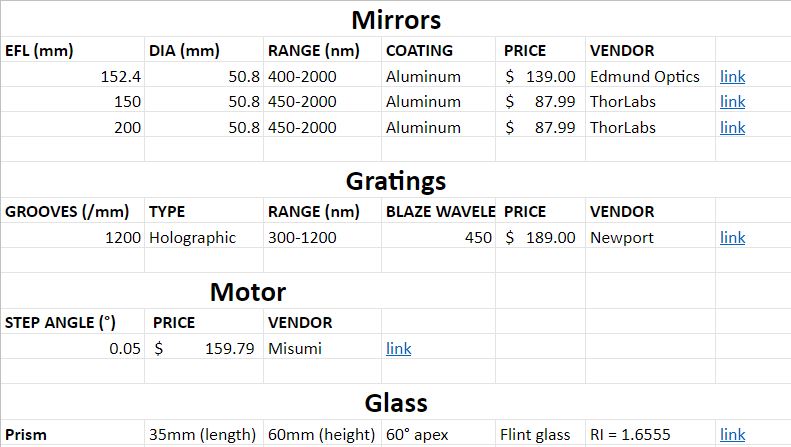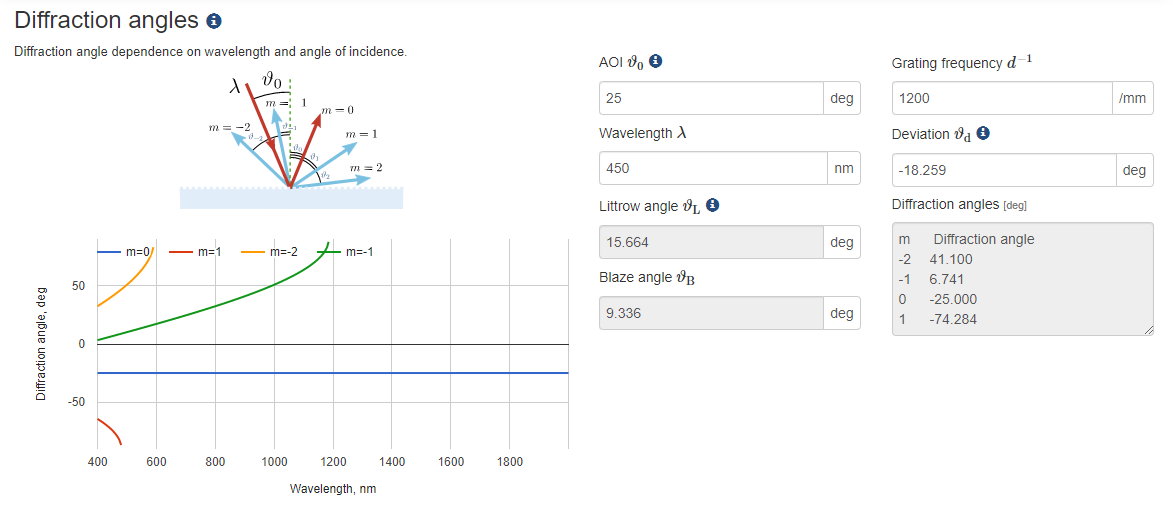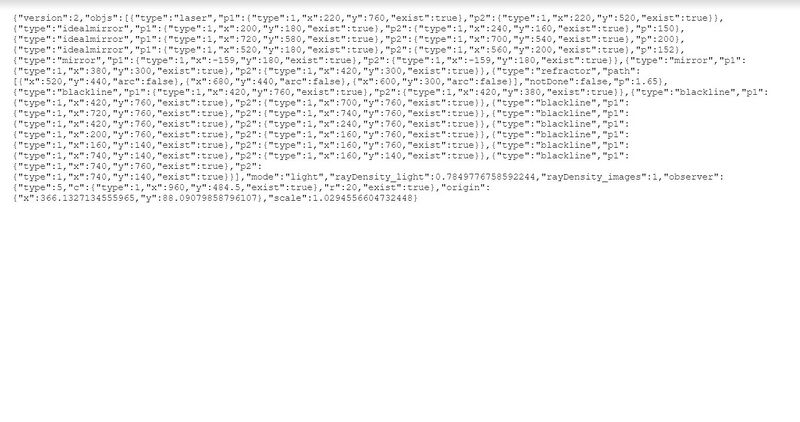
Introduction
A monochromator is a device that takes a light source of a specific wavelength and spatially separates the colors by either using a prism or a diffraction grating. The prism results the light to be separated by optical dispersion, while the diffraction grating uses methods of diffraction. An automatic scanning spectrometer is used in conjunction with the monochromator to record the changes in data as a function of wavelength. There are many other options pertaining to the relationship between the spectrometer and monochromator, such as using an absorption spectrometer. [1]
Safety
Avoid looking directly at the light source as it can damage eyesight.
Equipment or Bill of Materials
The list below contains all of the ordered parts for the Monochromator. Further parts, such as the 3D-printed parts and electronics, are listed below the image.
3D-printed Parts:
- Device box and Lid
- Mirror/lens Holders
- Prism Gear
- Manual Lightsource Slider
Electronics:
- Arduino Nano with Appropriate Wires
- Ocean Optics UV-VIS-NIR Lightsource
- NIRQUEST Near-Infrared Spectrometer
Calibration & Tolerances
The computations below were done by using interactive, online calculators. The links for each are given below their appropriate figure.
Beam Refraction in Prism Computation
Grating Computation
Diffraction Angle Computation
Ray Tracing
Operation & Procedure
- Place the lid on the box
- Turn on the lightsource and spectrometer
- Adjust the manual slider to allow the desired amount of light into the device
- Use as desired
Shutdown
To shut off the system, turn off the lightsource and spectrometer, and unplug them from the wall.
References
[1] Wikipedia, "Monochromator". https://en.wikipedia.org/wiki/Monochromator
[2] Optics Toolbox, "Beam Refraction in Prism", http://toolbox.lightcon.com/tools/prismrefraction/
[3] Optics Toolbox, "Grating Calculator", http://toolbox.lightcon.com/tools/gratingcalculator/
[4] Optics Toolbox, "Diffraction Angles", http://toolbox.lightcon.com/tools/diffractionangles/
[5] Ray Optics Simulation. https://ricktu288.github.io/ray-optics/simulator/






